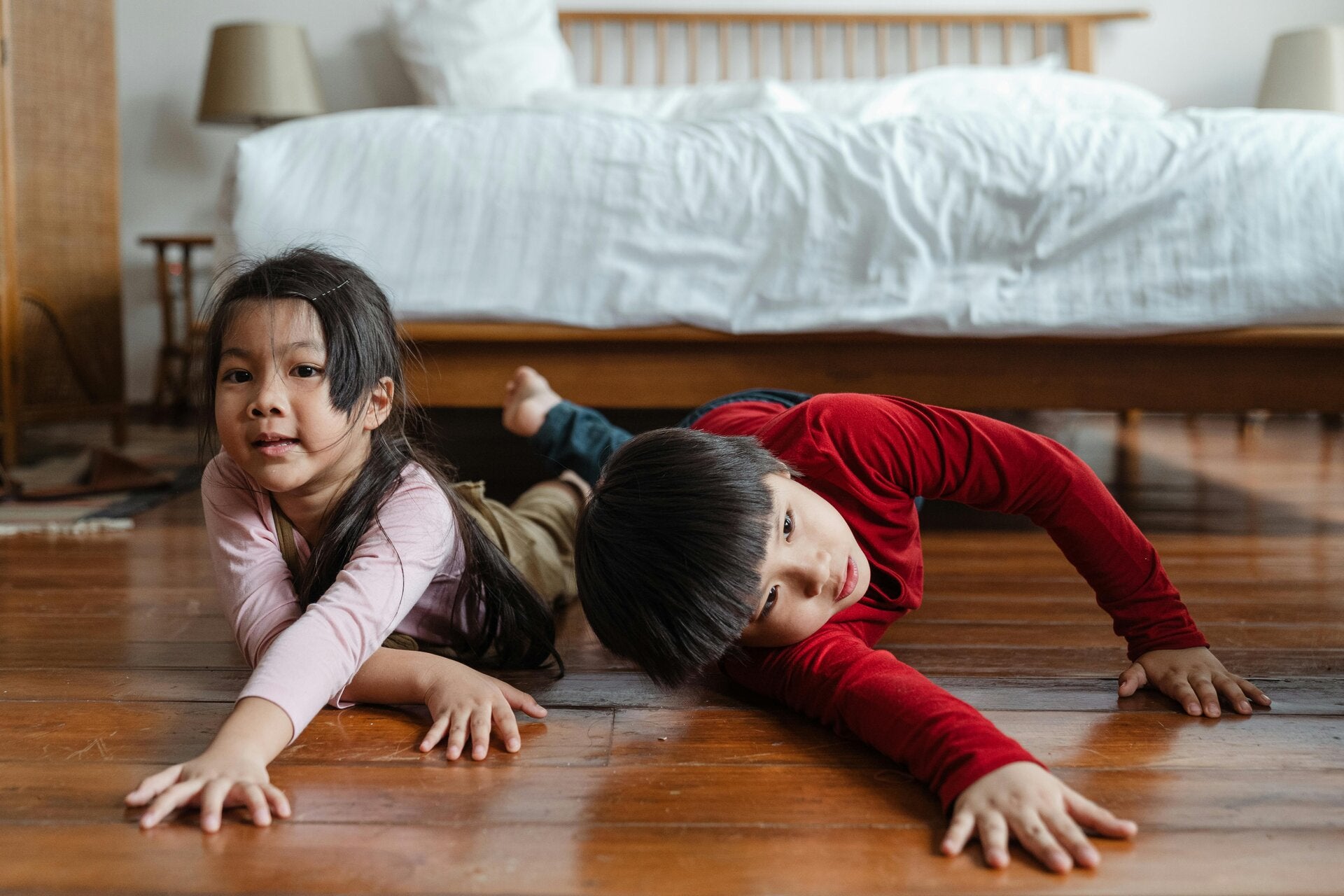By Syeda Rizvi

🌻Why Moving Helps Some Children Learn:
The Secret Potential of Motor-Based Education
Have you ever observed that your child learns more effectively when they are using their hands, pacing, fidgeting, or bouncing?
This is brain science, not "bad behaviour."
Many children rely on movement to activate the parts of the brain responsible for attention, memory, and learning. When the body moves, the brain switches on. (Egger et al., 2023; Álvarez-Bueno et al., 2025)
🌻Why Does Movement Aid in Learning?
1. Movement wakes up the nervous system-Many children, particularly those who are sensory seekers, find that sitting still actually reduces their level of attentiveness.
Movement improves alertness, enhances oxygen flow, and primes the body for concentration. A 2025 RCT found that “physically active lessons” improved children’s attention and on-task behaviour. (Hsieh et al., 2025 – IJBNPA)
2. Neural circuits are strengthened by motor activity-
Children's brains develop strong connections that support the following when they move more:
- Making plans
- sequencing
- recollection
- Solving problems
These serve as the cornerstones for learning activities including math, reading, and writing.
Physical activity improves executive function and working memory — core foundations for learning tasks. (Álvarez-Bueno et al., 2025 – Meta-analysis)
3. Movement reduces cognitive load-The brain doesn't have to use energy attempting to "stay still" while the body is able to move, fidget, or change positions.
This energy becomes available for listening, learning, and paying attention. A 2024 RCT found that perceptual-motor training reduced cognitive strain and improved attention in children with learning difficulties. (El-Meniawy et al., 2024 – BMC Pediatrics)
What Movement-Learners Often Look Like:
They might:
-
tap their fingers
-
wiggle their legs
-
stand instead of sit
-
chew gum or use chewables
-
bounce on a therapy ball
-
pace while telling a story
-
prefer hands-on activities over worksheets
These behaviours are not distractions — they are regulation tools.
Flexible classroom movement improves regulation and does not harm learning. (O’Keefe et al., 2024 – JASSB Review)
🌻From an OT perspective, learning begins in the body.
Occupational therapy acknowledges that learning involves sensorimotor as well as cognitive.
For kids to learn well, they require:
a controlled sensory system
steady posture
hands that are active
bodily consciousness
The capacity to travel across space
These foundations are strengthened by movement. (Pagaduan et al., 2025 – Systematic Review on preschool motor-cognition links)
Learning becomes difficult and exhausting without them.
🌻What Schools & Parents Can Try
The following straightforward, OT-approved techniques assist movement learners:
Adaptable seating
- foot fidgets, cushions, wobble stools, and therapy balls. Flexible learning spaces can reduce sedentary behaviour and increase learning engagement. (O’Keefe et al., 2024 – Scoping Review)
Every ten to fifteen minutes, take a break from movement
- Wall push-ups, animal walks, jumping jacks, and book carrying. Short active breaks are proven to improve classroom attention. (Hsieh et al., 2025 – IJBNPA)
✏ Learning through movement
- Stepping on tiles while spelling
- While bouncing a ball, count
- Using shaving foam or sand to trace letters
- Beanbags or stepping stones for math
Physically active lessons show cognitive gains compared with traditional seated lessons. (Hsieh et al., 2025)
Fidget toys or chewables
- Use oral or tactile input to enhance attentiveness.
Self-regulation tools allow children to maintain optimal arousal for learning. (O’Keefe et al., 2024)
💐The Big Takeaway💐:
Some children learn better as a result of mobility rather than in spite of it.
It is not distracting to move.
It is a route to concentration, self-control, and more in-depth education.
The mind becomes more receptive to learning when we respect the body's urge to move. (Egger et al., 2023; Pagaduan et al., 2025; Hsieh et al., 2025)
Reference List:
Álvarez-Bueno, C., et al. (2025). Physical activity and cognitive function in children: A systematic review and meta-analysis. PubMed.
Egger, F., et al. (2023). Physical activity and academic performance in school-age children: A systematic review. Sustainability.
El-Meniawy, G., et al. (2024). Goal-directed perceptual-motor exercise for children with specific learning difficulties: Randomized controlled trial. BMC Pediatrics.
Hsieh, S. S., et al. (2025). Physically active lessons and cognitive outcomes in elementary school children: A randomized controlled trial. International Journal of Behavioral Nutrition and Physical Activity.
O’Keefe, L., et al. (2024). Effects of flexible learning spaces, active breaks, and active lessons on sedentary behaviours, learning, and musculoskeletal health in school-aged children: A scoping review. Journal of Activity, Sedentary Behaviour and Health.
Pagaduan, J., et al. (2025). Movement behaviours and cognitive outcomes in preschoolers: A systematic review of randomized controlled trials. International Journal of Behavioral Nutrition and Physical Activity.



Add comment
Comments